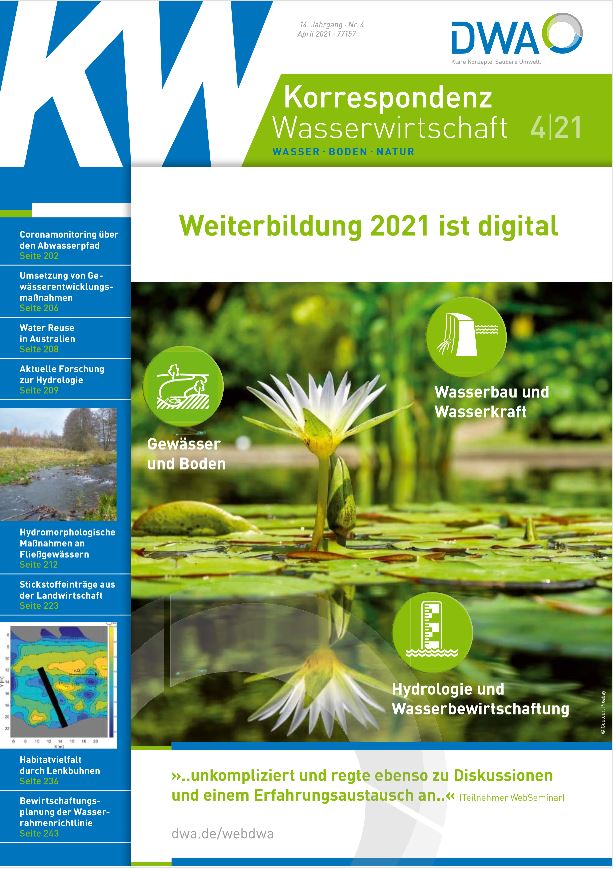
© Korrespondenz Wasserwirtschaft
Wirkung von Maßnahmen zur Verringerung von Stickstoffeinträgen aus der Landwirtschaft: Analyseergebnisse für das dezentrale Kooperationsmodell in NRW
- Publication
- Citation
Vidaurre, Rodrigo; Schritt, Hannes. 2021. "Wirkungsanalyse von Maßnahmen zur Verringerung von Stickstoffeinträgen aus der Landwirtschaft im Rahmen des dezentralen Kooperationsmodells NRW: Teil 1: Landwirtschaftliche Evaluierung". Korrespondenz Wasserwirtschaft 2021 (14), no. 4.
Drinking water protection in North Rhine-Westphalia is based on mandatory requirements as well as voluntary measures agreed on between farmers and water suppliers. A study conducted by Ecologic Institute and HYDOR Consult for the Ministry of the Environment, Agriculture, Nature Conservation and Consumer Protection in North Rhine-Westphalia (NRW) evaluated the outcomes of drinking water protection within the framework of the cooperative water protection model in NRW. The results were summarised in two articles in the journal “Korrespondenz Wasserwirtschaft”. Rodrigo Vidaurre and Hannes Schritt of Ecologic Institute are authors of Part 1, in which the measures effect was estimated based on agricultural and soil data. In Part 2, employees of HYDOR Consult performed an evaluation based on water resources data. The complete study can be downloaded under the following link: https://www.ecologic.eu/18162.
Partnerships to protect water bodies within water protection areas (WPAs) in North Rhine-Westphalia are based on the so-called “12-Point-Programme” adopted in 1989. The region chosen for the study was made up of 18 partnerships with 20 WPAs where drinking water extraction is flanked by agricultural measures to protect water bodies. In two of these areas, raw water is derived from dams; in all others, it is extracted from groundwater. This article focuses on evaluating agricultural databases, notably autumn Nmin datasets. This study’s aim was to analyse the mitigation impact of measures carried out within the partnerships so that they could be harnessed for implementation in other policy areas, such as the EU Water Framework Directive. However, local conditions such as the level of organic fertilisation, type of soil and amount of potential compensation, can severely affect the impact of a measure. Therefore, the study identified efficiency level bandwidths, whose plausibility was then validated using efficiency levels derived from literature. These mitigation impacts were estimated on the basis of autumn Nmin data.
The impact of short (‘summer’) catch crops and overwinter catch crops was estimated based on data for control areas for a period of several years. Researches similarly measured mitigation impacts for WPAs with a ‘premium model’, where compensation is provided based on the autumn Nmin level reached on the farmer’s field. This premium subsidy can be seen as a type of ‘meta measure’, which reflects the impact of many different actions and operations. Mitigation effects for advisory services (without compensatory payments for measures carried out) could also be established, based on data for only one WPA.



